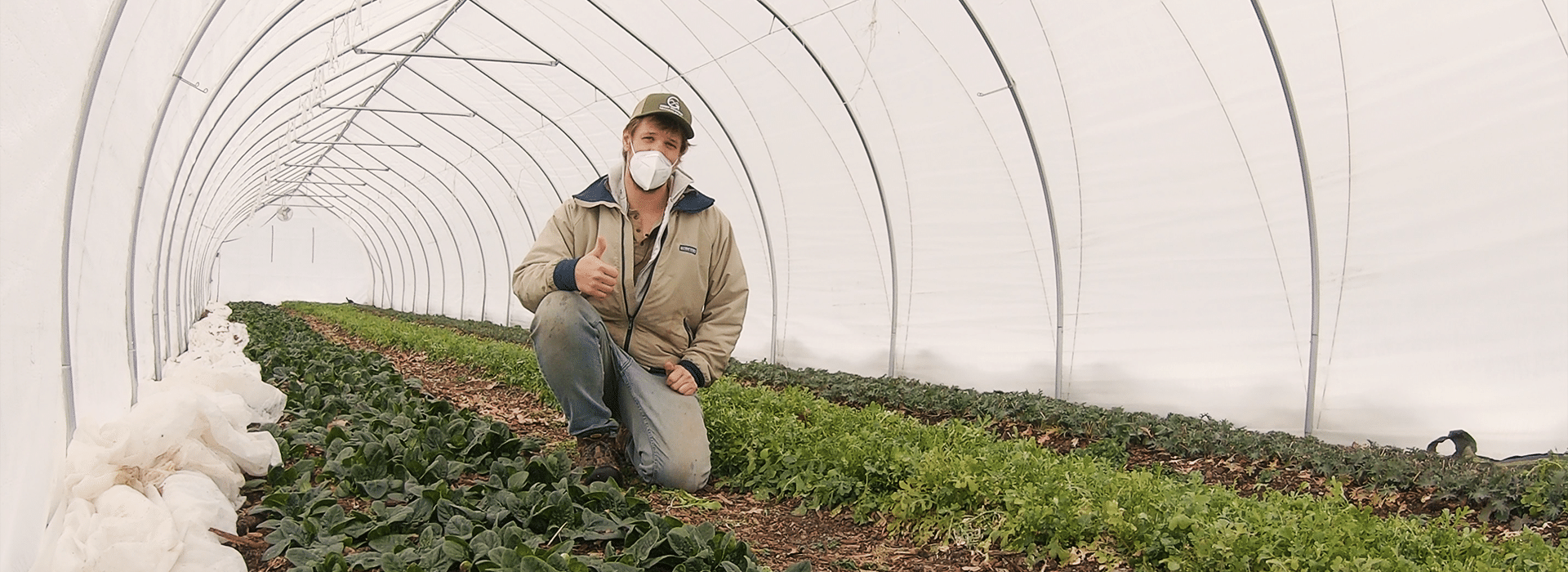Cold Weather Garden Preparation

Cold Weather Garden Preparation
With the snow and cold arriving, it’s a great time to stop and think about what it means to eat fresh, local produce in the winter. Believe it or not, we start growing produce for the winter in May. It begins with sweet potatoes, moves to winter squash and root crops (carrots, beets, and radishes) in August and ends with greens planted in October. None of this process is easy, but the reward of having crisp winter carrots, tasty sweet potatoes and sweet winter greens is worth it!
The part of our winter production that is the most work is our winter greens. Many of the greens you see in our farm store during the winter months are what we call cold hardy. Cold hardy means that they can survive a range of cold temperatures and conditions, each to a varying degree. Things like spinach can handle freeze and thaw with no issue, while crops like arugula need special protection to be harvested throughout the winter. That’s where farming ingenuity comes in!
By using plastic-covered structures (tunnels), we are able to protect these cold hardy, yet not invincible, crops from the harshest winter conditions. These tunnels help capture heat, keep the rain, ice, and snow off the crops as well as protect them from bitter winter winds. When the temperatures really drop, we also use something called row cover, which is a bedsheet-like material, that helps keep the plants insulted from the cold even more! The greens you have been eating from our farm store this winter were seeded in late October and have been babied all winter long, so we can harvest them fresh for you weekly.
No matter how much we prepare, Mother Nature is still the undisputed champ. She takes her share of the harvest every winter and seems to be especially fond of using February’s cold weather to make sure we remember who is really in charge!
